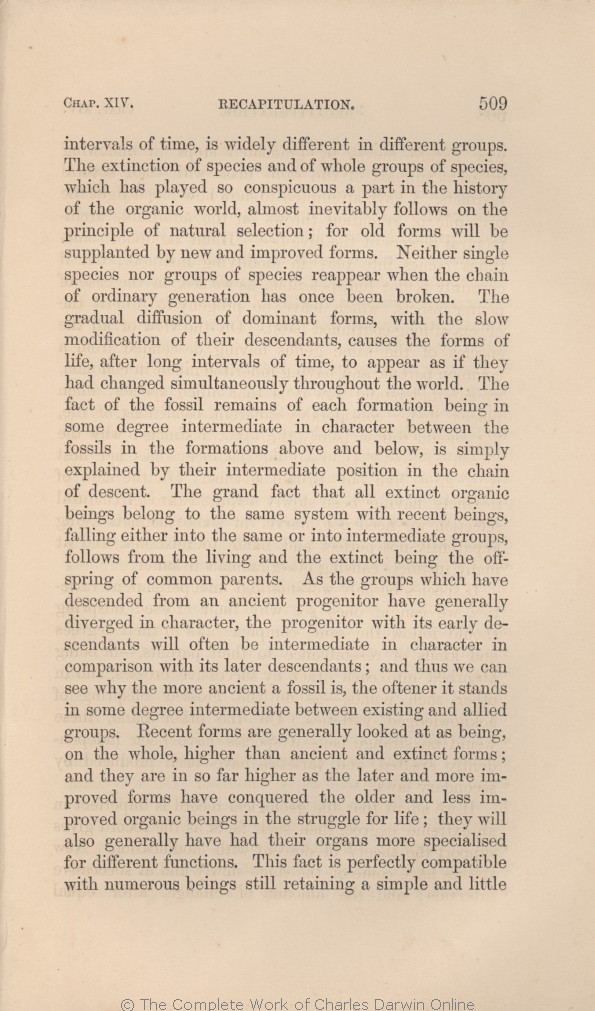intervals of time, is widely different in different groups. The extinction of species and of whole groups of species, which has played so conspicuous a part in the history of the organic world, almost inevitably follows
on | on 1859 1860 1861 1866 | | from 1869 1872 |
| will be 1859 1860 1861 1866 | | are 1869 1872 |
| reappear 1859 1860 1861 1866 1869 | | re-appear 1872 |
| has 1859 1860 1861 1866 | | is 1869 1872 |
| been 1859 1860 1861 1866 | been 1869 1872 |
| forms, 1859 1860 1861 1869 1872 | | forms 1866 |
| formations 1859 1860 1861 1869 1872 | | formation 1866 |
| organic 1859 1860 1861 1866 | organic 1869 1872 |
| belong to the same system with 1859 1860 1861 1866 |
| can be classed with all 1869 1872 |
| falling either into the same or into intermediate groups, 1859 1860 1861 1866 |
| naturally 1869 1872 |
| off-spring 1861 | | offspring 1859 1860 1866 1869 1872 |
| the groups which have descended from an ancient progenitor 1859 1860 1861 1866 |
| species 1869 1872 |
| character, 1859 1860 1861 1866 | | character 1869 1872 |
| the progenitor with its early descendants will often be intermediate in character in comparison with its later descendants; and thus 1859 1860 1861 1866 |
| during their long course of descent and modification, 1869 1872 |
| see 1859 1860 1861 1866 | | understand 1869 1872 |
| the 1859 1860 1861 1866 |
| it is that the 1869 1872 |
| a fossil is, the oftener it stands 1859 1860 1861 1866 |
| forms, or early progenitors of each group, so often occupy a position 1869 1872 |
| and allied 1859 1860 1861 | | allied 1866 | and allied 1869 1872 |
| at 1859 1860 1861 1866 1869 | | upon 1872 |
| on the whole, higher 1861 1866 |
| in some vague sense, higher 1859 1860 |
| on the whole, higher in the scale of organisation 1869 1872 |
| and extinct 1859 1860 1861 1866 | and extinct 1869 1872 |
| are 1859 1860 1861 1866 |
| must be higher, 1869 1872 |
| in so far higher 1859 1860 1861 |
| higher in so far 1866 |
| in so far 1869 1872 |
| organic beings 1859 1860 1861 1866 | | forms 1869 1872 |
| life; they will also generally have had their organs more specialised for different functions. 1861 1866 |
| life. 1859 1860 |
| life; they have also generally had their organs more specialized for different functions. 1869 |
| life; they have also generally had their organs more specialised for different functions. 1872 |
| little improved organisation 1861 1866 |
| but little improved structures, 1869 1872 |
|









